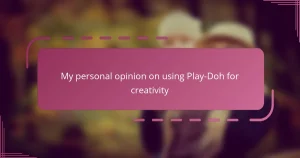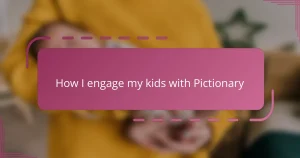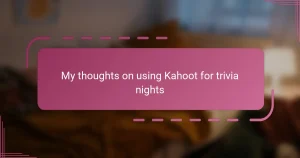Key takeaways
- Having a clear strategy in parenting helps guide children to make better decisions and develop resilience and confidence.
- Teaching chess enhances skills like patience, foresight, concentration, and problem-solving through engaging gameplay.
- Encouraging strategic thinking through play fosters creativity and helps children learn to weigh consequences before acting.
- Monitoring progress in learning chess involves adapting teaching methods and focusing on the thought process rather than just winning or losing.
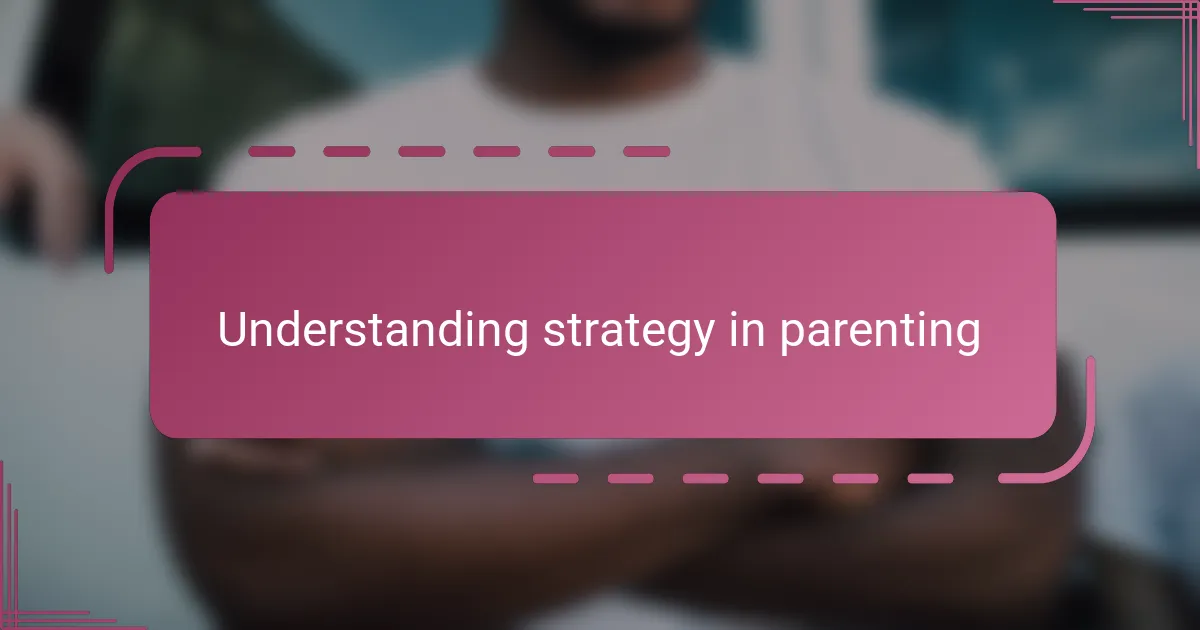
Understanding strategy in parenting
Understanding strategy in parenting often feels like navigating a complex game, doesn’t it? I’ve found that having a clear plan helps me anticipate challenges and respond thoughtfully, rather than just reacting on impulse. When I think of strategy, I see it as a way to guide my kids toward making better decisions, rather than telling them what to do all the time.
Sometimes, it’s about stepping back and recognizing the bigger picture. For example, when my child struggles with patience, I remind myself that immediate frustration is part of growth, and my approach needs to be patient and consistent. Isn’t it fascinating how a well-thought-out strategy can actually reduce family stress and create more meaningful connections?
I often ask myself: Am I teaching my kids to be proactive thinkers? Strategy in parenting means modeling foresight—showing them that thoughtful planning can lead to better outcomes. From my experience, this mindset builds resilience and confidence, qualities that benefit them well beyond childhood.
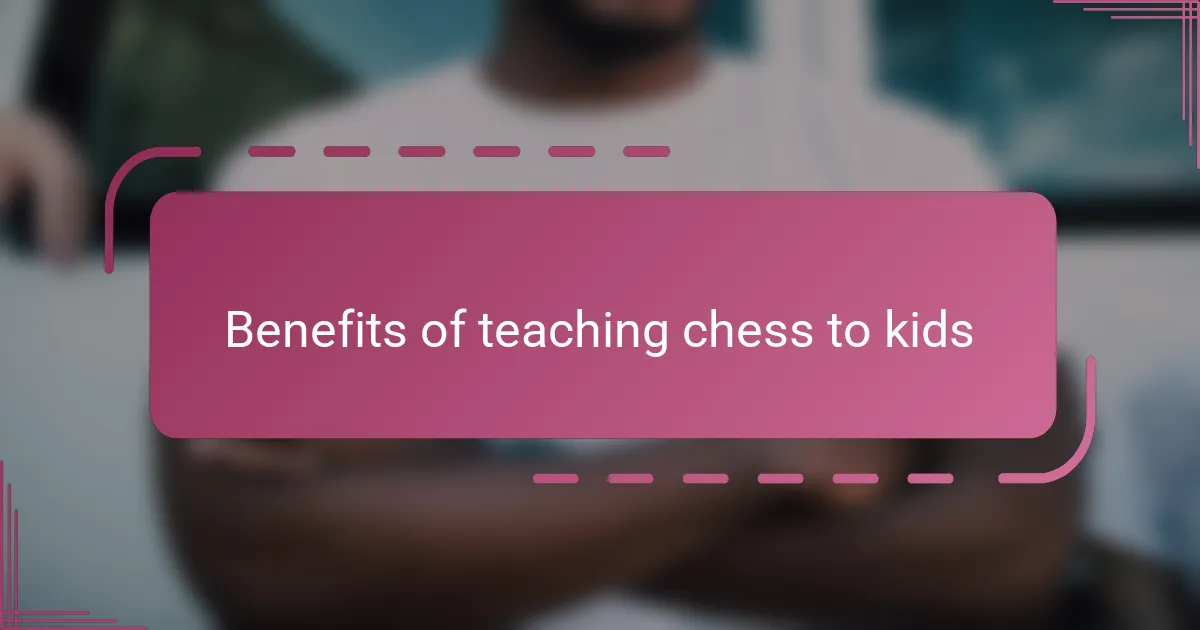
Benefits of teaching chess to kids
Chess has been a wonderful tool for teaching my kids how to think several moves ahead. I remember watching my daughter pause thoughtfully before making her move, considering not just what she wanted to do, but what her opponent might do next. That moment showed me how chess encourages patience and foresight, skills that are so valuable in everyday life.
Have you noticed how playing chess can boost concentration? When my son gets absorbed in the game, everything else fades away. Through chess, I’ve seen him develop a stronger focus, which has helped him immensely during homework and other activities.
One of the most rewarding benefits I’ve seen is how chess fosters problem-solving skills in my children. Each game presents new challenges, and they learn to adapt their plans and explore creative solutions. It’s amazing to see them grow more confident facing obstacles, both on the board and off.
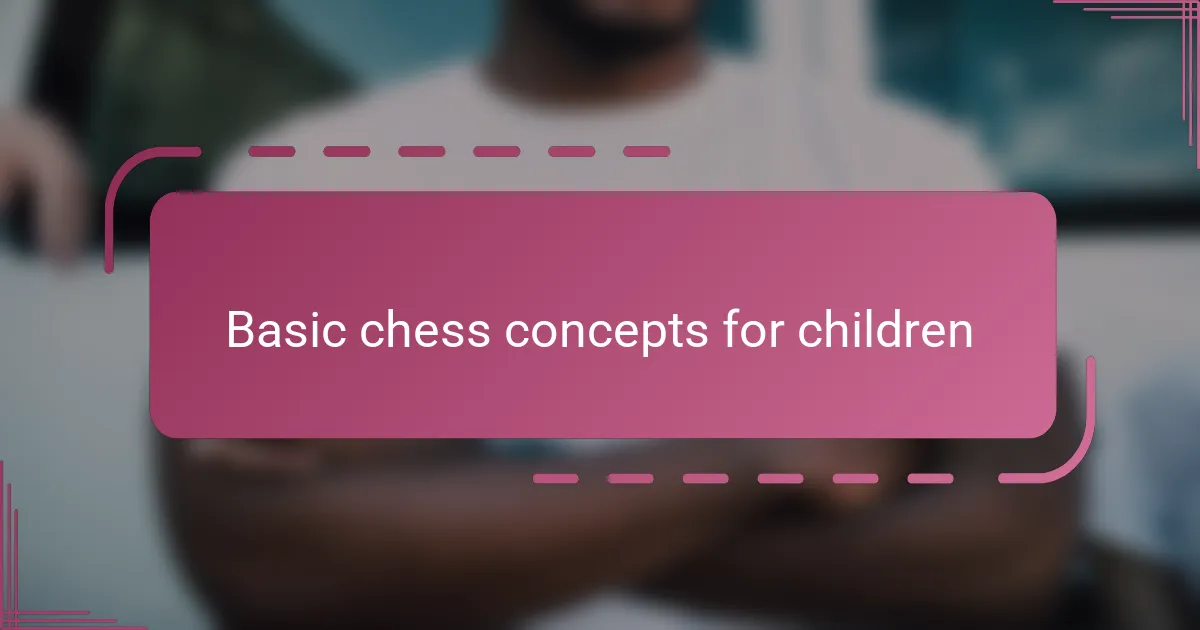
Basic chess concepts for children
When my kids first started learning chess, I focused on helping them grasp the basic rules—how each piece moves and why the king is so important. It was fascinating to watch their faces light up when they understood concepts like check and checkmate. Have you ever seen a child’s excitement after realizing they can capture a piece? That moment made me realize how these simple ideas build a foundation for strategic thinking.
I also introduced them to the idea of controlling the center of the board early on. At first, it seemed abstract, but then I explained it like claiming the best real estate in a game. Somehow, this analogy made the concept click, and they started thinking about positioning their pieces more thoughtfully. It’s funny how kids absorb strategy better when it’s tied to everyday ideas.
Teaching basic chess concepts feels like opening a door to a new world for my children. With each game, they practice planning and anticipation without even realizing it. Isn’t it incredible that such a simple game can teach patience, foresight, and decision-making all at once? I’m grateful to see these skills take root so naturally.
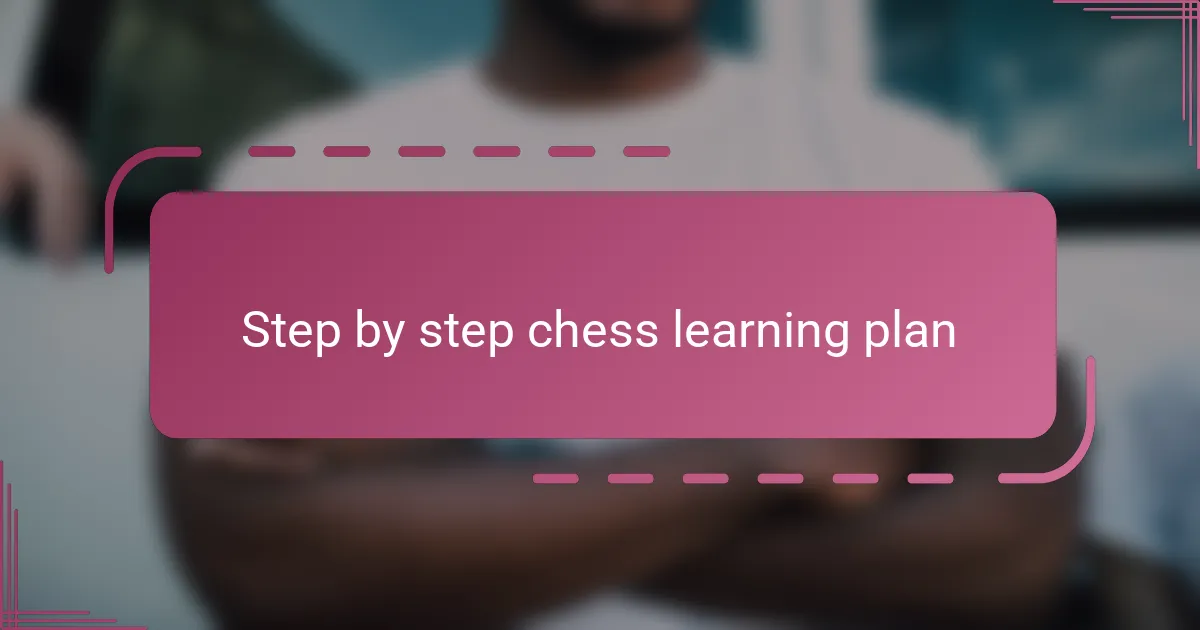
Step by step chess learning plan
Breaking down chess learning into clear steps has made all the difference for my kids. We started with simple exercises like identifying pieces and their moves before moving on to playing mini-games focused on specific tactics. Have you ever noticed how kids gain confidence when they master one small skill at a time?
Gradually, I introduced them to basic strategies like opening principles and simple endgame patterns. One moment stands out—when my son realized that controlling the center early could shape the whole game. It was like a lightbulb went off, and suddenly chess felt less like a puzzle and more like a story unfolding.
Now, we practice reviewing games together to spot mistakes and celebrate smart moves. This reflective step helps them see chess as a continuous learning journey, not just winning or losing. Don’t you think having a thoughtful plan like this nurtures patience and resilience beyond the board? I certainly do.
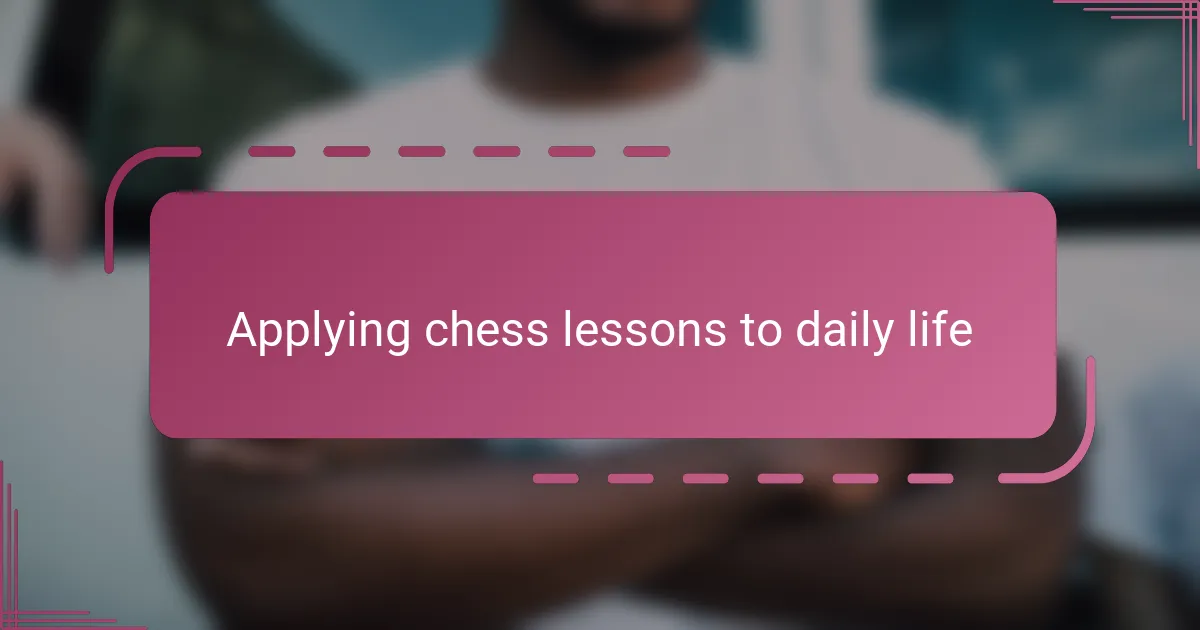
Applying chess lessons to daily life
I often catch myself drawing parallels between a tough chess match and everyday decisions. When my child faces a tricky situation, I remind them to pause and consider all possible outcomes, just like they would before making a move. Doesn’t that kind of thinking help us avoid rushing into choices we might regret?
There’s also something powerful about learning to adapt when a plan doesn’t work out. I remember a game where my daughter’s strategy was suddenly disrupted, and she quickly shifted gears instead of giving up. Isn’t that resilience we want to cultivate in kids, not just for chess but for life’s unexpected turns?
Applying chess lessons means encouraging my kids to think ahead, weigh risks, and stay calm under pressure. These aren’t just game tactics—they’re life skills that build confidence and independence. Have you noticed how a simple shift in mindset can change the way kids face challenges every day?
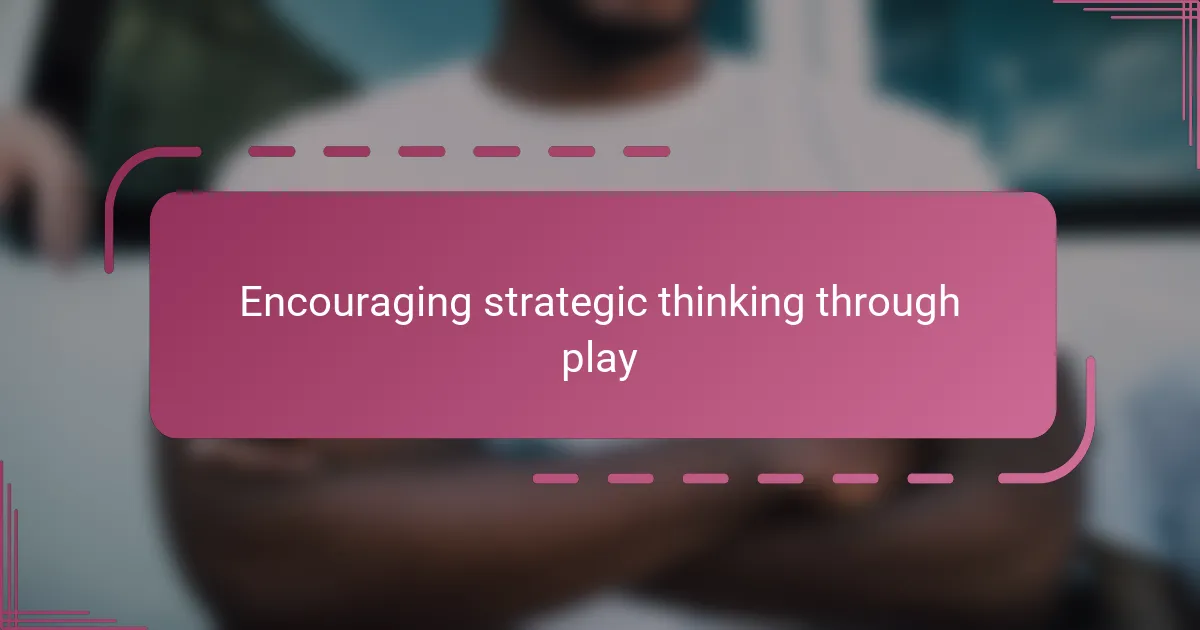
Encouraging strategic thinking through play
When I watch my kids dive into a game of chess, I see more than just moves being made—I see their minds actively working to solve puzzles in real time. Play naturally invites curiosity and experimentation, which are key ingredients for strategic thinking. Isn’t it wonderful how something as simple as a game can gently stretch their brains without them even realizing it?
I remember one afternoon when my daughter started drawing parallels between a tricky chess position and a problem she faced at school. She paused, weighed her options, and tried a move that wasn’t obvious at first but turned out to be a clever solution. Moments like these remind me that play is a powerful teacher, encouraging kids to think several steps ahead and consider consequences before acting.
Encouraging strategic thinking through play doesn’t mean laying out strict lessons; it’s about creating a space where kids feel safe to explore ideas, take risks, and learn from mistakes. Have you noticed how children naturally develop patience and foresight when they’re engaged in a game they enjoy? It’s in that playful environment that strategy truly blossoms.
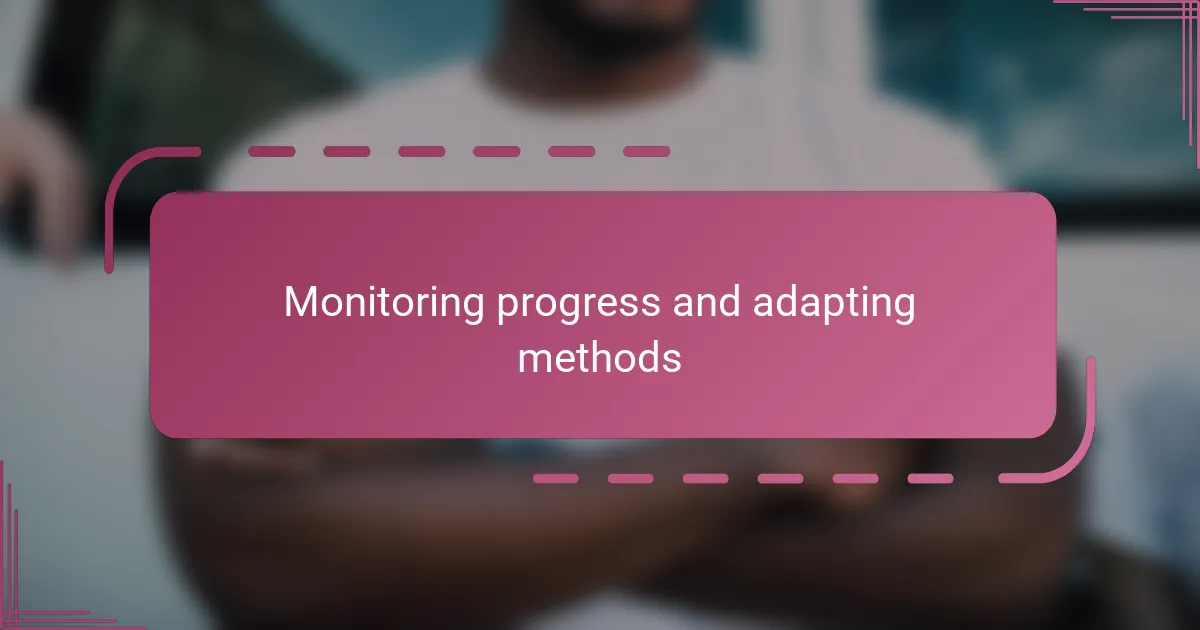
Monitoring progress and adapting methods
Tracking how my kids progress in chess is never just about counting wins or losses. I pay attention to their thought process—do they pause to consider their opponent’s potential moves, or do they rush? This subtle shift in how they approach the game tells me a lot about their growing strategic thinking.
Sometimes, I realize that my initial teaching method isn’t clicking, so I switch things up—maybe by introducing more visual aids or turning a lesson into a fun story. Have you ever noticed that a new angle or example can suddenly spark understanding? That adaptability feels crucial in keeping their interest alive.
It’s rewarding to see how small adjustments lead to big improvements, but it also teaches me patience. Progress is rarely linear; some days feel like two steps forward and one step back. How do you stay flexible when teaching something as complex as strategy? For me, it’s all about listening to my kids and letting their curiosity guide the way.
